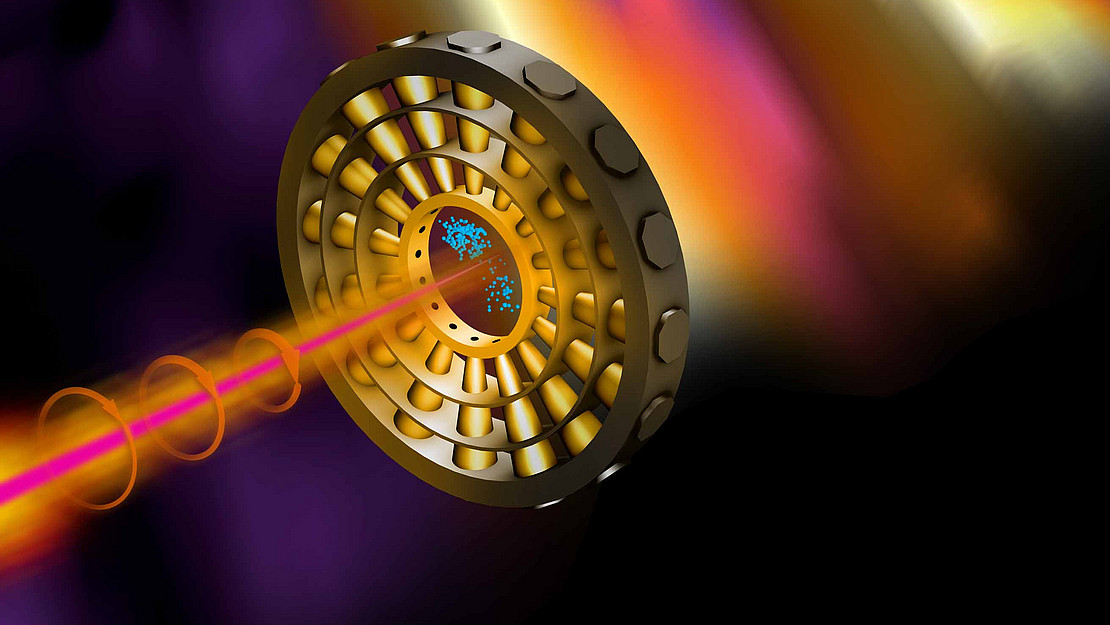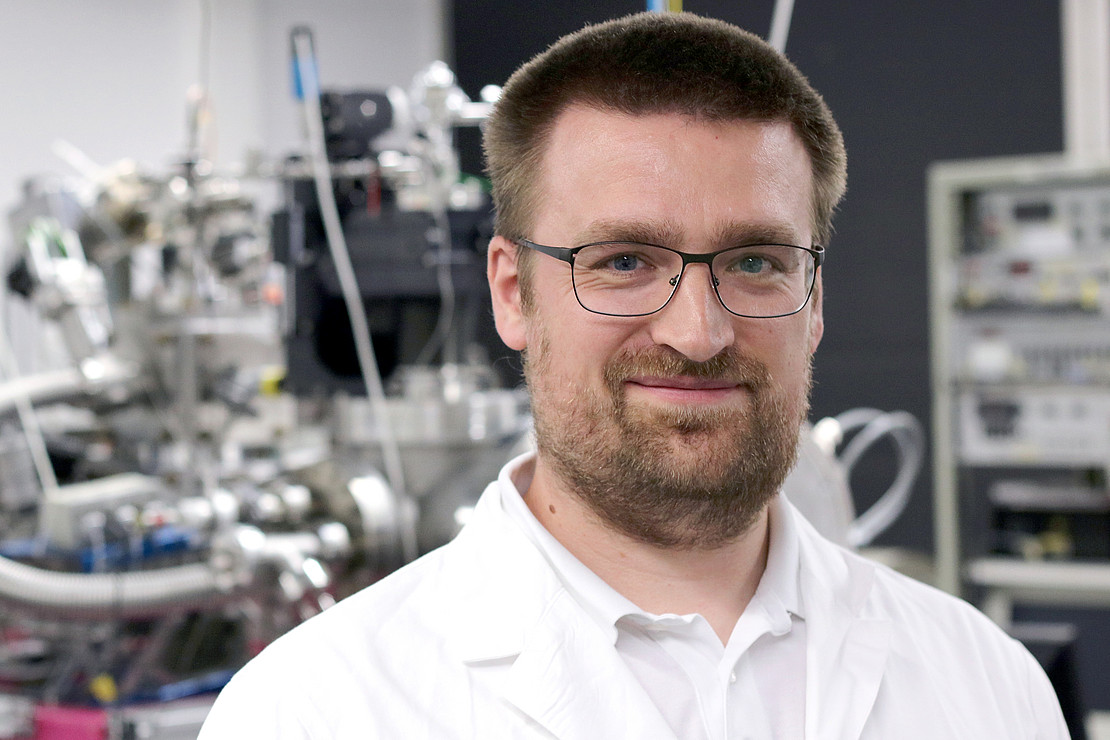This page contains automatically translated content.
Vorstoß in bisher unerreichte Zeitspannen – Kasseler Physiker beteiligt am Attosekunden-Projekt
 Image: Terry Anderson / SLAC National Accelerator Laboratory.
Image: Terry Anderson / SLAC National Accelerator Laboratory. Image: Photo: University of Kassel.
Image: Photo: University of Kassel.Um Prozesse auf atomarer und sub-atomarer Ebene beobachten und verstehen zu können, nutzt die Experimentalphysik ultrakurze Licht-Impulse, mit denen Atome oder Moleküle in großen Teilchenbeschleunigern beschossen werden. Die Reaktionen der Atome, etwa der Winkel, in dem sie zerfallen, lassen Rückschlüsse auf ihre Eigenschaften und ihr Verhalten zu, beispielsweise die Reaktion mit anderen Atomen. Je kürzer die Licht-Impulse, umso besser ist die „Zeitlupe“, mit der diese Reaktion beobachtet werden kann. Da der Entstehungsprozess der verwendeten Strahlung innerhalb gewisser Grenzen zufällig ist, sind die Eigenschaften der Einzelpulse, von denen Hunderte bis mehrere Tausende pro Sekunde erzeugt werden, bisher nur sehr grob bekannt.
Diese Limitierung wurde nun von einer internationalen Kooperation von Wissenschaftlern überwunden. Dafür bauten sie eine sogenannte ,,Atto-clock”, indem sie einen Messaufbau verwendeten, der aus Elektronen-Detektoren besteht, die wie ein Zifferblatt einer Uhr ringförmig angeordnet sind. Wenn ein Röntgen-Impuls ein Atom oder Molekül im Zentrum des Rings trifft, schießt er Elektronen aus diesem heraus. Diese Elektronen werden anschließend von einem zirkular polarisierten Laser getroffen, der als (Atto)-sekundenzeiger dient, und fliegen den Detektor-Ring entlang, bevor sie auf einem von ihnen „landen“. Wie schnell und wie viele das in dem jeweiligen Detektor tun, verrät den Wissenschaftlern die Intensität, die Puls-Dauer und die Wellenlänge des eingesetzten Impulses. Erst dann kann das Verhalten des Atoms interpretiert werden, etwa wie sich die einzelnen Schritte einer chemischen Reaktion vollziehen.
Hauptverantwortlich für die Datenauswertung war Dr. Gregor Hartmann vom Institut für Physik der Universität Kassel: ,,Neben dem direkten Nachweis der ultrakurzen Lichtpulse ist die größte Freude, dass mit unserer Methode jeder einzelne Schuss der Freie-Elektronen-Laser zeitlich und energetisch charakterisiert werden kann. Dies erzeugt bei jedem Experiment dieser Anlagen einen enormen Mehrwert, da die jeweiligen Experimentatoren in ihrer Datenanalyse nun endlich ganz spezifische Strahlungseigenschaften aussuchen können, was vorher einfach nicht möglich war.”
Die Ergebnisse sind jetzt im Journal Nature Photonics erschienen und haben es sogar aufs Titelblatt der aktuellen Ausgabe geschafft.
Link zum Nature-Artikel: https://www.nature.com/articles/s41566-018-0107-6
Download der Bilder in hoher Auflösung: https://www.xfel.eu/news_and_events/news/index_eng.html?openDirectAnchor=1450&two_columns=0
Pressemeldung des Stanford PULSE Institute, Kalifornien, zum Attosekunden-Projekt: https://www6.slac.stanford.edu/news/2018-04-04-tick-tock-attoclock-tracking-x-ray-laser-pulses-record-speeds.aspx
Kontakt:
Dr. Gregor Hartmann
Universität Kassel
Fachgebiet Experimentalphysik IV/ Dünne Schichten & Synchrotronstrahlung
Tel.: +49 561 804-4354
E-Mail: gregor.hartmann[at]physik.uni-kassel[dot]de